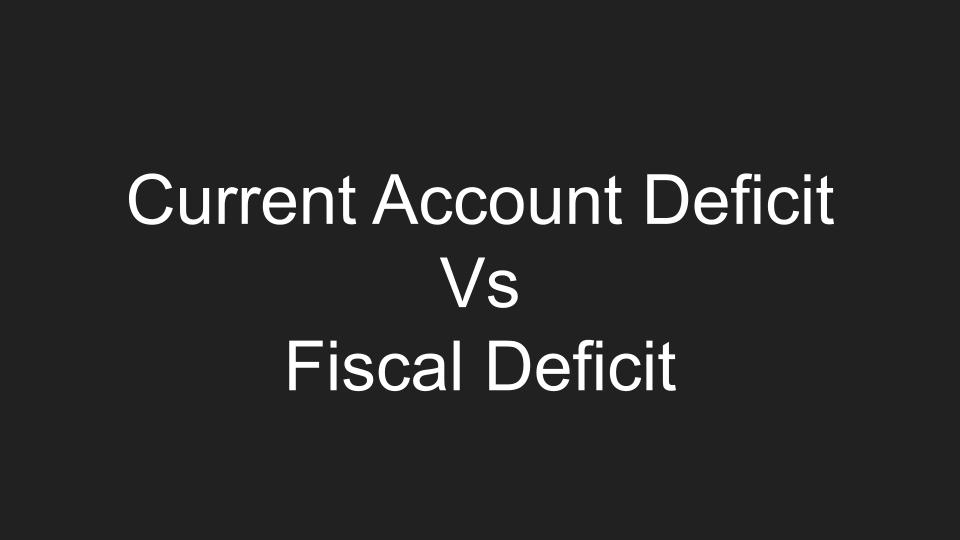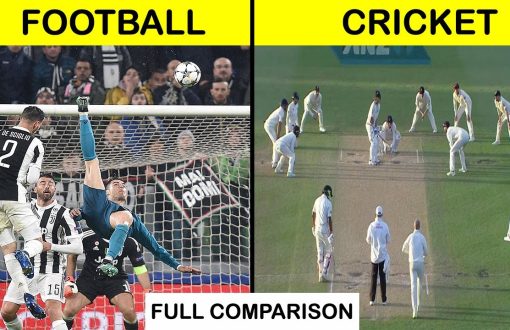Understanding the Economic Landscape: Current Account Deficit vs. Fiscal Deficit

In the vast expanse of economics, two frequently discussed terms, especially in the context of national finances, are Current Account Deficit and Fiscal Deficit. These concepts, pivotal in gauging a country’s economic health, often overlap in discussions but have distinctive differences that set them apart. Through this article, we’ll comprehensively dissect these terms and help readers grasp their nuances.
1. An Introduction to Current Account Deficit:
The Current Account is one of the two primary components of the Balance of Payments (BoP), the other being the Capital Account. It encompasses the trade in goods and services, primary income (like interest and dividends), and secondary income (like remittances).
A Current Account Deficit arises when a country spends more on foreign trade (imports) than it earns (exports). It essentially means the country is consuming more from the rest of the world than it produces.
Components of the Current Account:
- Trade in Goods: Tangible items traded, e.g., electronics, oil, or machinery.
- Trade in Services: Intangibles like tourism, financial services, or software services.
- Primary Income: Income from investments or loans, either made to or received from other countries.
- Secondary Income: Transfers made without a quid pro quo, e.g., remittances by foreign workers to their home country.
2. Decoding Fiscal Deficit:
The term Fiscal Deficit pertains specifically to a government’s finances. It’s the difference between the government’s total revenue and its total expenditure, including loan repayments. If a government is spending more than it’s earning or receiving, it’s said to have a fiscal deficit.
Key Components:
- Revenue Receipts: The income government receives without incurring a liability, e.g., taxes.
- Capital Receipts: Borrowings and other liabilities.
- Total Expenditure: Includes both revenue expenditure (like salaries, pensions) and capital expenditure (infrastructure, loans).
3. Distinguishing Between Current Account and Fiscal Deficits:
- Nature and Scope:
- Current Account Deficit: Relates to the nation’s balance of trade, income, and transfers with the rest of the world.
- Fiscal Deficit: Focuses on the government’s budgetary position.
- Implications:
- Current Account Deficit: Indicates a country might be overly reliant on foreign goods and services, which can lead to external debt. However, a temporary CAD can be beneficial if imports are directed towards productive assets.
- Fiscal Deficit: Reveals the total borrowing requirements of a government. A higher fiscal deficit could mean higher government debt but could also mean more government investment in the economy.
- Causes:
- Current Account Deficit: Driven by factors like high import demand, low export competitiveness, and large-scale foreign debt repayments.
- Fiscal Deficit: Caused by high government expenditure vis-à-vis its revenues.
- Measures to Correct:
- Current Account Deficit: Improve export competitiveness, curb non-essential imports, or promote foreign investments and remittances.
- Fiscal Deficit: Increase revenue through taxation, disinvestment, or decrease expenditure.
4. Which is More Concerning?
The preference between tackling CAD or fiscal deficit largely depends on the specific economic context of a country:
- A prolonged Current Account Deficit might make a country vulnerable to external economic shocks and rely excessively on foreign capital.
- A high Fiscal Deficit could indicate that a government is overspending or not generating enough revenue. This might lead to higher public debt or inflation if financed by printing money.
However, neither deficit is inherently “bad.” Both can be used strategically for growth if managed responsibly.
Conclusion:
The realms of Current Account Deficit and Fiscal Deficit might seem daunting at first, but they are fundamental yardsticks in assessing a nation’s economic standing. While they measure different aspects — one national and the other governmental — both play crucial roles in shaping the fiscal and monetary policies of a country. As global economies evolve, understanding these intricate nuances becomes indispensable for policymakers, investors, and scholars alike.



